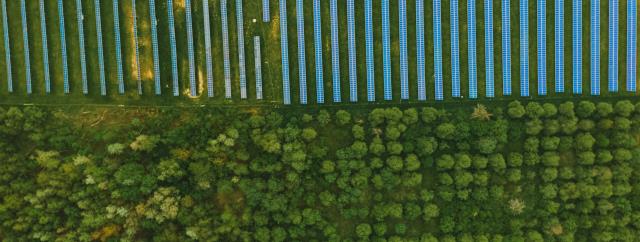
ETAF
A multi-stakeholder climate finance solution
The Energy Transition Accelerator Financing (ETAF) Platform is an inclusive, multi-stakeholder climate finance platform managed by IRENA to advance the global energy transition in developing economies.
ETAF facilitates capital deployment to finance medium-to-large-scale-feasible renewable energy projects to achieve an adaptable and resilient energy transition and to bolster economic and social impact in developing countries.
The Platform supports the implementation of ambitious National Determined Contributions (NDCs) to meet the Paris Agreement targets (addressing mitigation, adaptation and climate resilience); ETAF also contributes to the realisation of United Nations Sustainable Development Goals (SDGs) while serving strategic national objectives such as energy access and security, economic diversification and sustainable impact.
The Platform has mobilised more than US$ 4 billion in pledges to accelerate the energy transition by 2030 through strategic partnerships with leading renewable energy financing and de-risking entities. By leveraging IRENA’s convening power, ETAF identifies renewable energy projects from its member countries and connect them with de-risking and financing solutions provided by its Partners.
The 14 ETAF Partners are:
- the Abu Dhabi Fund for Development (ADFD),
- the Asian Infrastructure Investment Bank (AIIB),
- the Abu Dhabi Future Energy Company (Masdar),
- Swiss Reinsurance Company Ltd (Swiss Re),
- OPEC Fund for International Development (OPEC Fund),
- the Inter-American Development Bank (IDB),
- the Emirates Development Bank (EDB),
- the Islamic Development Bank Group (IsDB),
- the Islamic Corporation for the Insurance of Investment and Export Credit (ICIEC),
- the European Bank for Reconstruction and Development (EBRD),
- the Hongkong and Shanghai Banking Corporation (HSBC),
- the International Finance Corporation (IFC),
- the Multilateral Investment Guarantee Agency (MIGA),
- Africa 50.
ETAF Objectives
- Facilitate and build a geographic and technologically diversified pipeline of bankable renewable energy projects in developing countries.
- Mobilise funding and derisking resources from international financial institutions and insurance providers, such as MDBs, DFIs, and the private sector, to fund eligible projects’ capital expenditures.
- Provide technical assistance to eligible projects to ensure bankability regarding economic, environmental, and social sustainability and implementation readiness.
How ETAF works
- Open rolling “Call for Projects” and regular activities to guide on the projects’ registration and submission process.
- Meet the project’s eligibility and readiness screening criteria:
- Access to IRENA’s resources and experts, providing curated guidance and technical assistance targeted to local and regional developers.
- Facilitate access to funding and de-risking products, provided by the ETAF Partners and other co-funding sources.
Geographic scope: IRENA member countries [or in accession]
Technology: feasible projects featuring proven renewable energy and decarbonisation technologies
Project’s development level: beyond the business development stage and have availability of grid connection (for on-grid projects) and offtake arrangements
Climate action and sustainable alignment: compliance with Paris Agreement objectives and realisation of NDCs and SDGs
Project size: have a minimum project CAPEX of USD 25 million (for private sector/PPP projects) and USD 10 million (for public sector projects)
IRENA/ADFD Facility (2013-2020)
IRENA-ADFD partnership built on common objectives and on groundwork with local developers and focal points in member countries
In 2013, the International Renewable Energy Agency (IRENA) and the Abu Dhabi Fund for Development (ADFD) initiated a partnership to deploy resources to finance renewable energy (RE) projects in developing countries.
The United Arab Emirates anchored the initiative with USD 350 million to fund the IRENA-ADFD Facility allocated in seven cycles, running until 2020.
IRENA guided the initiative through a call for proposal and the review and recommendation of projects to ADFD for final selection and funding:
- ADFD committed to allocate USD 50 million per cycle to selected projects with ticket sizes ranging from USD 5 to 15 million per project to fund up to 50% of the total project costs.
- Funding with attractive features: interest rates ranging [1%- 2%] on a 15-20 year-tenor.
- ADFD fully underwrote funding with sovereign risk-mitigation provided by governments where the projects are located.
- A final list of 32 projects were selected, of which 26 successfully met the required funding criteria. ADFD committed financing to these 26 RE projects and further attracted around USD 567 million in co-funding pledges from other financing sources during 2014-2020.